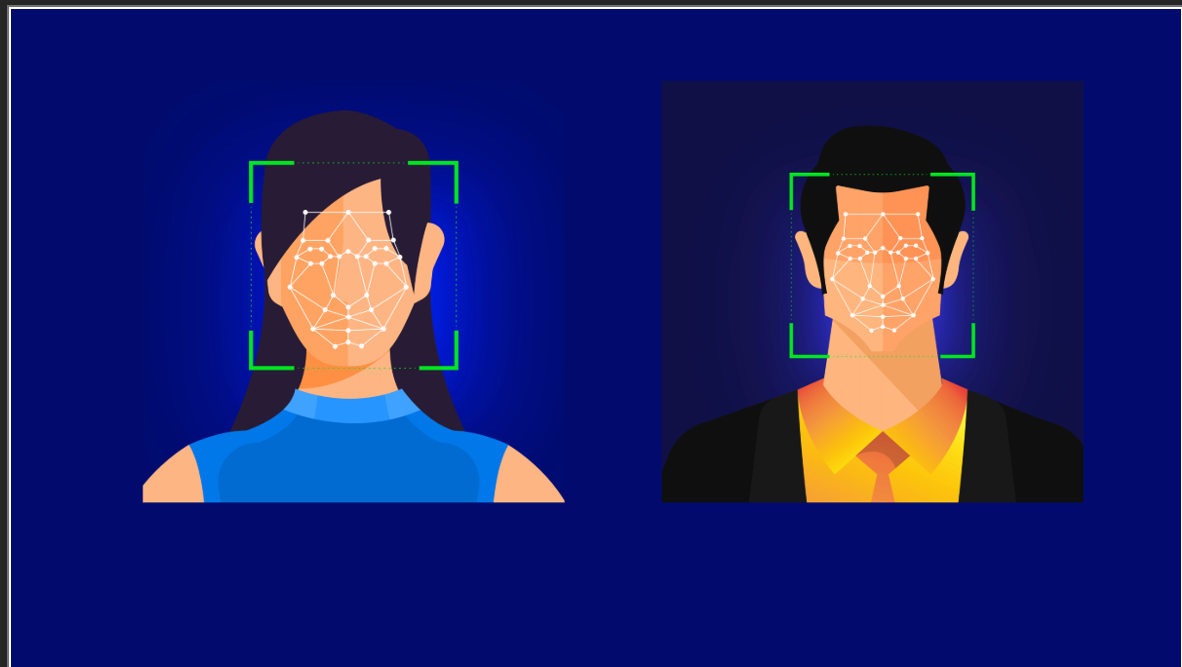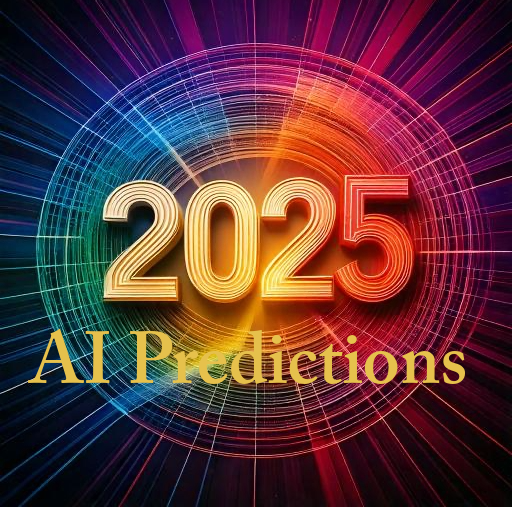INSIGHTS & RESOURCES

By Carolyn Schrader
•
January 22, 2025
Some splendid tech trends are going on. A research paper, 2025 Game Changers , was published by one of the news sources I follow - CB Insights https://www.cbinsights.com/newsletter/ . It was first published in September 2024 and listed again in January 2025. If you missed either, here are some of their insights for game changers in 2025. 1. AI weather prediction 2. Ultra-deep drilling 3. AI agent marketplaces 4. Advanced nuclear propulsion 5. Biocomputing 6. Brain manipulation tech 7. Quantum-optimized portfolio 8. Cellular & epigenetic reprograming 9. GPS-less navigation systems AI Weather Prediction Both local and global extreme weather may be more predictable with AI models. The World Economic Forum identified the #1 long-term global risk over the next 10 years to be extreme weather events. AI models are improving and may supplement or replace traditional physics-based models. AI Agent Marketplaces AI agents will likely become “plug and play” and interface with both internal and external agents of a company or organization. Simply, an AI agent is a software program that uses AI to perform its designated task or activity. An agent might be using sensors to gather data, use its knowledge to make a decision, or provide information when asked a question/prompt. Brain Manipulation Tech Research is underway to develop brain-computer interfaces/devices that will enable communication between the brain and an external device/computer. AI will work on the interpretation of brain signals. This technology could help motor-impaired patients. It may lead to the ability to learn more about how the brain operates with depression, ADHD, and more. GPS-less navigation systems We generally take the benefits of GPS for granted, in many everyday activities. There is an increase threat to malicious interfacing with this technology. So researchers are working on alternatives. New systems are AltPNT – Alternative Positioning, Navigation, & Timing. A few options include 1) alternative space-based – commercial satellites at lower orbits than those uses for GPS, 2) Non-radio frequency system, such as magnetic, and 3) multi-sensor fusion which includes integration of several sources such as lidar and cellular systems.

December 10, 2024
A host of books have been published recently covering all aspects of AI – tools, future impacts to society, highly scientific analyses, and more. If you are looking for a good read, here are some suggestions. The top sellers on Amazon, according to a ChatGPT prompt are: Nexus: A Brief History of Information Networks from the Stone Age to AI by Yuval Noah Harari Harari explores the evolution of information networks, culminating in the rise of artificial intelligence. Co-Intelligence: Living and Working with AI by Ethan Mollick Mollick examines the integration of AI into daily life and work, offering insights into collaborative intelligence. The ChatGPT Millionaire: Making Money Online Has Never Been This EASY by Neil Dagger Dagger provides strategies for leveraging AI tools like ChatGPT to generate income online. The Singularity Is Nearer: When We Merge with AI by Ray Kurzweil Kurzweil discusses the impending convergence of humans and AI, predicting transformative technological advancements. The Coming Wave: Technology, Power, and the Twenty-First Century’s Greatest Dilemma by Mustafa Suleyman Suleyman addresses the challenges and opportunities presented by emerging technologies, including AI. Genesis: Artificial Intelligence, Hope, and the Human Spirit by Henry A. Kissinger Kissinger reflects on the philosophical and ethical implications of AI’s development. AI Snake Oil: What Artificial Intelligence Can Do, What It Can’t, and How to Tell the Difference by Arvind Narayanan Narayanan critically examines the capabilities and limitations of AI, debunking common misconceptions. AI Entrepreneur’s Handbook: Build a Profitable Business and Make Money by Unleashing the Power of ChatGPT and Artificial Intelligence by Kartikeya Malhotra Malhotra offers guidance on creating AI-driven businesses using tools like ChatGPT. ChatGPT for Nonfiction Authors: How to Use ChatGPT to Write Better, Faster, and More Effectively by Hassan Osman Osman provides practical advice for nonfiction authors on utilizing ChatGPT to enhance their writing process. LLM Engineer’s Handbook: Master the Art of Engineering Large Language Models from Concept to Production by Paul Iusztin Iusztin delves into the engineering of large language models, offering a comprehensive guide from concept to deployment. Special Mention ChatGPT for Baby Boomers by Carolyn Schrader My book is tailored for curious Baby Boomers (and others!) who are new to AI. For additional popular AI books, check out these two sources: https://fivebooks.com/category/technology/artificial-intelligence/ https://usefulai.com/books - 26 Best Books on AI in 2024 (65+ Reviewed) Happy reading!

December 10, 2024
If you didn’t finish your holiday shopping during several weeks of Black Friday deals, here are some ideas from Sage, my ChatGPT assistant. Custom AI Portraits: Use AI art generators to create unique portraits of loved ones in different styles (e.g., futuristic, Renaissance, or abstract). Use an online provider to produce a physical copy in a frame. Smart Sleep Devices: AI-based gadgets like the Hatch Restore for improved sleep through AI-customized routines. Custom Audiobook Narrations: Services that use AI voices to narrate a loved one’s favorite stories. eBook or paperback on ChatGPT or other AI tool: There are a variety of choices, including books for beginners and for baby boomers). Subscription to an AI tool: Options include ChatGPT paid version which includes more features than the free version and Adobe’s Firefly generative AI creative tool Interactive Pets: AI-driven robots like Aibo the dog (he is not cheap, but darn cute! https://youtu.be/5ifwGc-0mAY) or other lifelike pets. Coding Robots for Kids: AI-powered robots like Cozmo or Sphero Bolt that teach kids programming and problem-solving. Stocking Stuffers and Small Gifts AI Translation Pens: Great for travelers, these devices translate text instantly. AI-Powered Joke Books or Poetry Generators: Create funny or meaningful gifts based on personalized inputs. AI-Powered Key Finder: Devices like Tile or Apple AirTag that use AI to help locate lost items. AI-Powered Mood Rings: Rings or bracelets that change color based on AI predictions of mood or biometrics. Trivia Gadgets: AI-driven trivia games like the Quizbot for instant fun. You can ask ChatGPT for a list of suggested gifts by price range, age, or other criteria. Once you get an initial list, ChatGPT will provide additional details on any items with a follow-up prompt or two. Don’t forget to think about what gift you want for yourself. Did you know that self-gifting is popular? It is estimated that approximately 83% of American holiday shoppers plan to purchase gifts for themselves. Happy Shopping!

December 10, 2024
Let’s assume you have approval to use an AI tool such as ChatGPT at work (if you don’t, check out my article on BYOAI), here are some ways to add extra value to your work output and hopefully impress your boss! 1. Create automatic meeting summaries – input your messy stream-of-meeting notes into your AI tool and ask it to create condensed notes in bullet fashion. You can also ask it to create a list of follow-up items and by dates, if they were discussed in the meeting. 2. Draft emails – I hear form people frequently that this is one of the best loved features of an AI tool. Have a pesky email that you need to respond to diplomatically? Ask your AI tool virtual assistant to draft it. An AI tool can help with crafting a polite but firm reminder email to an employee that still owes you a job completion report or needs to complete an activity that is overdue. 3. Write social media posts – ask your virtual assistant to draft a short post (you can specify the length and tone of the post) about a new product launch, a financial report, or highlight industry news of the day. 4. Draft presentation content – either a presentation you plan to give or help out your boss with an initial draft of what you think they should say about a project update or a request for staffing. 5. Research industry news – what are the upcoming trends, what factors will impact growth, what new studies or research has been released and quoted by influencers in your field. Once you start using an AI tool in this manner, you might be astonished how many ways it can ease your workday and increase your effectiveness. Be sure to tell your boss about your positive experiences.

December 10, 2024
With BYOAI, it feels like everyone’s BYOP—Bring Your Own Problems—and letting the AI sort them out! (AI humor from Sage, my ChatGPT assistant) So what is BYOAI? Many businesses are slow to integrate consumer-use AI tools into their approved business processes. However, a whopping 78% of AI users are bringing their own AI tools to work , according to a survey from Microsoft. A new term has been coined – Bring Your Own AI (BYOAI). As you can imagine, this is likely to cause a business data risk, since people use the tool without the governance, controls, and monitoring of the tool usage. Telling people to not use the tool and reduce their efficiency is a lousy way to manage risk in the long run. A specific AI Tool Use Policy is needed with accompanying risk management measures, just as with other risk types. What You Can Do If you work in compliance or governance, you can assist your company by suggesting to your leaders that an existing BYOD (Bring Your Own Device) Policy can be tweaked to cover BYOAI. If you don’t work directly in compliance or governance, you can assist your company by discussing the potential risk to your company of inconsistent AI usage with company data. You can proactively recommend that the leaders add a BYOAI Policy. Here is a great opportunity to sell the specific benefits of using AI in the workplace. In either case, you can strengthen the value of the policy by implementing a vetting process to evaluate and approve AI tools. Ask all employees what tools they already use personally and know about and would like to use at work. Tools that meet your company’s security and privacy standards can then be authorized for use with company data (including email responses and meeting summaries). Training Matters As with all technology, the better trained the employees are, the better the work product results. There are fewer tech problems and overall employees can be more efficient and less frustrated about the tools they use. If you already BYOAI If your company doesn’t have a policy or guidelines, be careful you don’t violate other security and data policies. Be cautious about using company data as you would on any other business application on non-company devices. For example, if you don’t use excel on for your business work on your personal computer, don’t use an AI tool that way.

December 10, 2024
Do you research and try new prompts? Do you regularly experiment with ways to use AI? Do you frequently ask yourself, “Could AI help me with this? You are an AI power user, according to a recent 2024 World Trend Index Annual Report from Microsoft and LinkedIn (May 2024). These users are more likely to: Redesign their business processes and workflows with AI - 66% Use AI to catch up on missed meetings – 56% Analyze information – 51% Design visual content - 49% Interact with customers - 49% Some of these activities are possible with new AI functions such as meeting recaps and AI notes by Microsoft Teams. Other activities can be done using AI tools such as ChatGPT or Claude. AI tool use is not age specific It is not just a specific age group that are in this early adopter phase. This Microsoft survey found users were in the follow age groups: Gen Z: 85% Millennials: 78% Gen X: 76% Boomers: 73% Other User Levels Whether by need or inclination, AI tool users might be Skeptics Novices Explorers Power Users Looks like adoption of the internet, social media, and Internet of Things, doesn’t it? Futurists forecast a super-fast increase in adoption.

June 19, 2024
Risk management for AI ethics can be a daunting activity for many companies. As a leader, you might be asking yourself practical questions like how do I get started, what do I have to include initially and what can I postpone until my company uses AI more broadly. A best approach is to start small but quickly. Plan to expand your risk management function as you make additional strategic decisions on AI integration and be prepared to revise your risk management program as your company’s use of AI evolves. Since AI as a theme is evolving so quickly, your program should be concise and flexible so you can deal with a changing landscape rapidly. Risk Management frameworks generally include multiple components. For AI ethics governance (another name for risk management), I propose to businesses they include the following structural pillars in their program: Governance Framework Risk Assessment AI Use Policy Controls Control Procedures Training Monitoring Reporting These pillars are the foundation of a governance program that can be followed by key stakeholders such as compliance, legal, product/service, sales, and operational areas of your organization. Governance Framework Think of this as a road map. At a high level, what AI risks are you trying to manage? How from a strategic perspective do you want to do this? Who will own the governance and who will support the governance? Document your basic answers to these questions. You can always modify them later. Risk Assessment Plan to perform an assessment of what AI risks you think need to be governed. You will want to rate each risk – for example, high, medium, low. Plan to perform this initially and then periodically. Some risks may need to be managed daily or monthly and others only annually. Identify key stakeholders for each risk. What is the primary area developing the initial use of AI for a specific task/activity? Who will perform the activity, who is handling the testing and the validation? What organizational area will handle oversight – legal, compliance, operations area? Assess the likely financial impact of each risk. You can use specific dollar ranges or categories like low, moderate, high. AI Use Policy Now that you have an overarching framework and a first round of risk assessment completed, you will want to get a general AI Use Policy statement in place. This does not need to be a multiple page statement to cover all situations, but should be an easy to understand statement that all your stakeholders, employees, and customers can read and have for future reference. How does your company want to position itself to the public about AI usage? This is in someways similar to a code of conduct policy or a sustainability policy. What is your company’s commitment on ethical use of AI? Controls Controls are processes put into place to “control” or mitigate the designated risk. A control might be a weekly review of testing and validation activities for an AI data model or a random manual sampling of emails generated by a chat tool such as ChatGPT uses for customer service responses. A sampling will help ensure that the responses meet your company’s quality standards and are consistent regardless of the customer segment. Each control identifies what the activity is and what its specific purpose is. Control Procedures Procedures should be written and updated as needed to document how each control is executed, what is done if the control is executed incorrectly, and how it will be monitored/tested for effectiveness. There may also be another layer of “desktop” procedures – detailing how specific tasks are performed and what the handoffs might be to other teams. These procedures are generally more granular that control procedures and provide the how-to steps for employees. Training Identifying, documenting, and providing training is a key risk mitigation activity. If a company ensures AI practices are understood and adhered to by applicable employees, the company is better able to mitigate related risks. For instance, new-hire training on procedures for using an AI chat tool can reduce rogue usage that might harm your customers. Monitoring Monitoring your risk program and specific activities ensures that your program aligns with the identified risk levels. If you have performance gaps in risk mitigation, monitoring will help identify these gaps, allowing you to develop plans to address them. Monitoring may also be required by customer contracts, outside governing bodies, or investors. Reporting Reporting is a way to be transparent. It can serve as a tool for management to determine where to adjust how risk is managed. It can be a way to document AI usage for outside external governing bodies. It can provide confidence to board of directors that risks are well managed. Extracts of results can be shared with customers or communities that want proof of your transparency. Conclusion AI is a part of almost every business going forward. To support transparent and ethical use of AI, it is wise for your company to plan now how you will ensure your employees and third partner providers are using AI in support of socially responsible, non-discriminatory, and sustainable manner. Your governance program can be basic to start and then be expanded and customized to fit your company’s risk level. Managing AI ethics is a crucial component of a responsible, ethical company’s overall strategy to manage risk and support thoughtful growth and protection of its employees, customers, and stakeholders.

June 12, 2024
What fun! I tried three AI headshot companies to see how the process worked and what the results would be. I felt a bit like Goldilocks – each company provided a different perspective of me. One made me look at least 10 years younger, another made me look older, and one was darn close to the real me. I purchased the basic service from all three companies, each under $30. One required 14+ selfies, while another only asked for six or more. Key Takeaways 1. Variability in Results There can be a tremendous difference in the results, even when using the same set of photos across different companies. The underlying algorithms vary significantly, as evidenced by the differences in my results. 2. AI-Generated Images These companies don't simply alter your photos; they create entirely new AI-generated images. For instance, I didn’t get a photo back that changed my black t-shirt to a denim jacket outfit. Instead, they created a variation of “me” – using my hair, face, and an outfit they selected. Be Aware A professional photographer often allows you to have 2-3 clothing changes. You might do some poses with a business jacket on and some with a shirt, for example. You know going in directionally what your photographs might look like. With Generative AI, you don’t know all the decisions before you see the results. - Unexpected Accessories: The services might add jewelry and reimagine you in clothes that don't match your usual style or any of the photos you uploaded. For me, the changes included turtleneck sweaters, dainty gold necklaces, and hats. - Color Changes: Some companies alter the color of your clothes. One service returned all photos in shades of green, although I had uploaded photos of myself in black, blue, or rose-colored tops. - Business headshot vs casual (or other) headshot: Many of the generated headshots were not business headshots – poses and clothes varied greatly. You may need to experiment with the selection of clothing options and background options the service provides. The Process The three companies I used had easy-to-navigate websites, though one site initially didn’t work correctly, and I had to return another day to complete the order. You upload multiple selfies or other photographs, with each site providing clear information about what photos work for their service. Requirements such as the number of photos to upload vary. The sites each asked basic questions such as eye color, hair color, age range, and ethnicity (you can opt out of some questions). The services I used offer different plans, with more money providing more headshots. All headshots were returned within a few hours. Edits allowed are limited – for example, you can adjust blemishes but not change hair color. A fourth company wouldn’t accept any of my iPhone selfies. It accepted two of my professional photographer's headshots but rejected one. Since I needed to upload at least six pictures, I couldn’t test their results. Suggestions to AI Headshot Companies - Skip the Jewelry: Jewelry is too personal a style choice. Use what the customer has on in the photos or leave jewelry off. - Provide Color Options for Clothes: If you aren’t mimicking what the person is wearing, allow the customer to select 2-3 colors for their final headshots. - Stick to Appropriate Attire: If advertising professional headshots, don’t put the person in evening attire. Better yet, let your customer choose from several options – formal business, casual, evening, etc. - Offer an Entertainment Plan: Consider offering an option for fun – let customers see themselves with different hair colors or radically different haircuts. Conclusion The experiment was worth it. It was educational to test several companies. It was informative to see what the variances were between different company results. The best AI processes improve over time and I look forward to seeing how these companies enhance their product offerings in the future.
Resources Coming Soon...
My company uses artificial intelligence in a transparent and honest manner. We support the use of AI in business with the use criteria including being socially beneficial, explainable, fair, and secure. We integrate AI tools into our business processes to enhance efficiency and decision-making and to improve quality.




